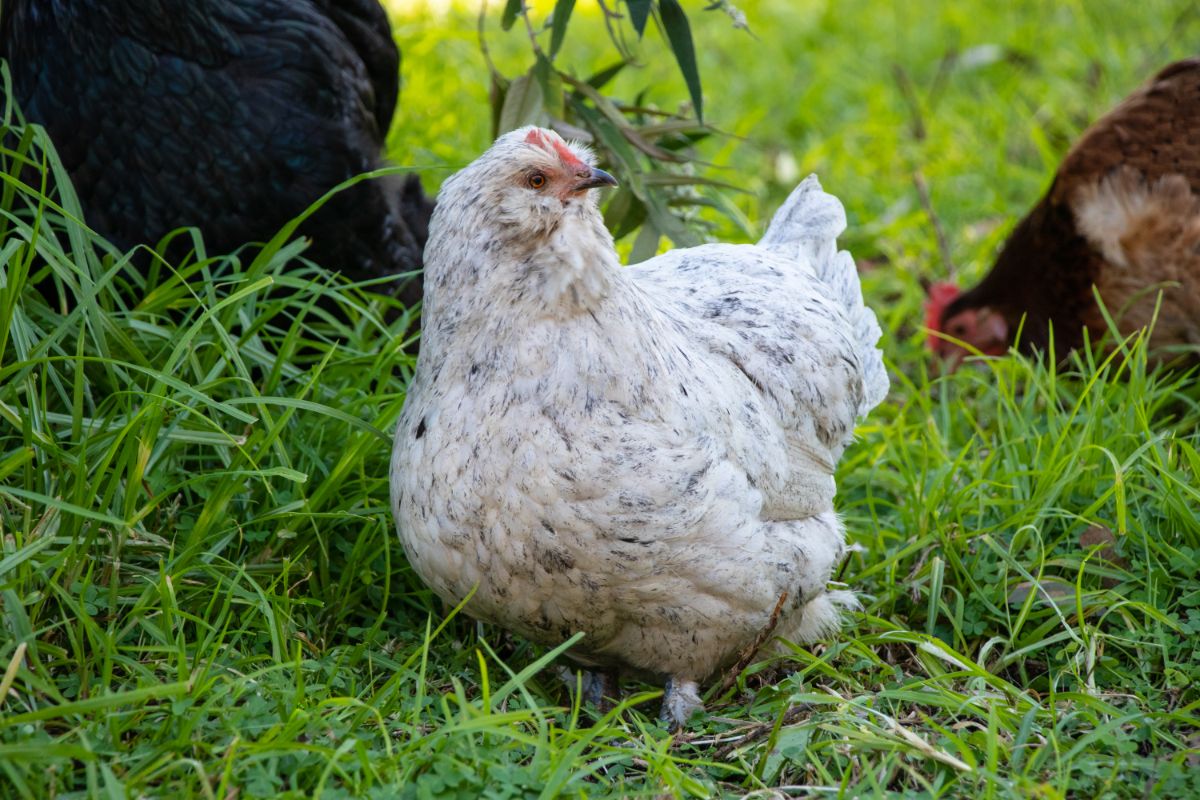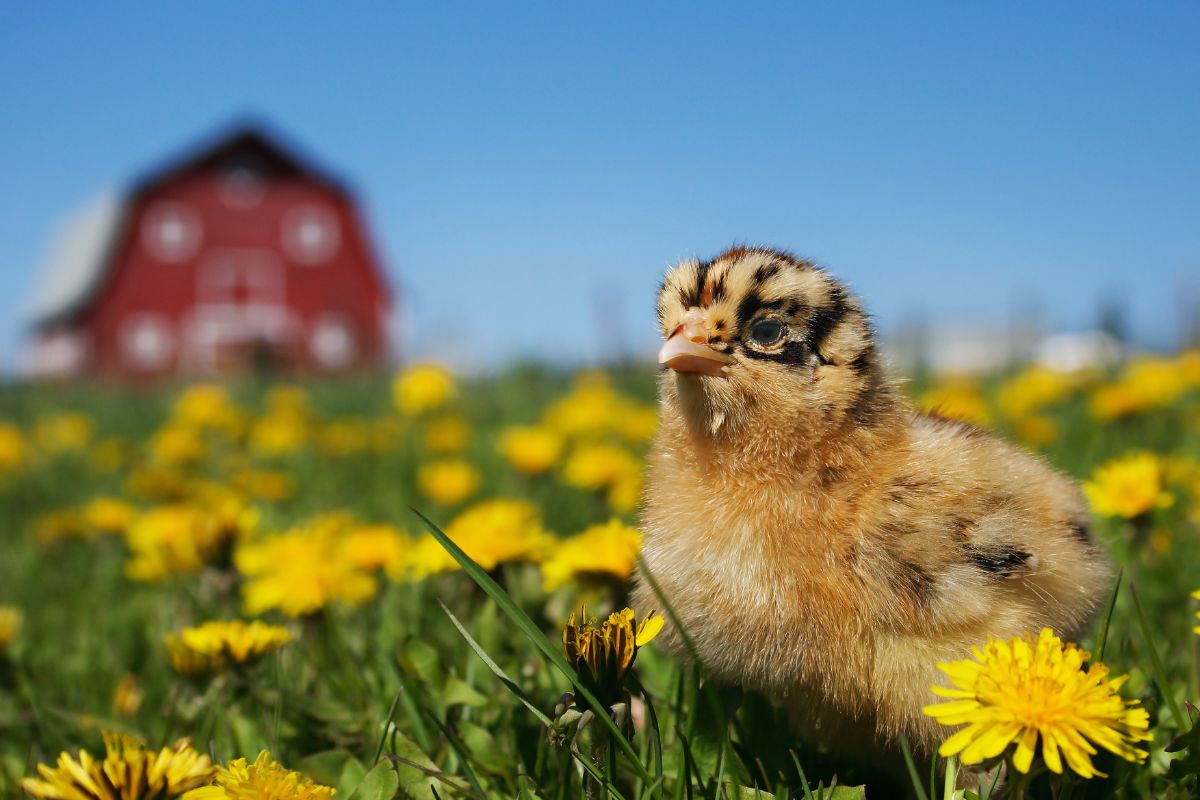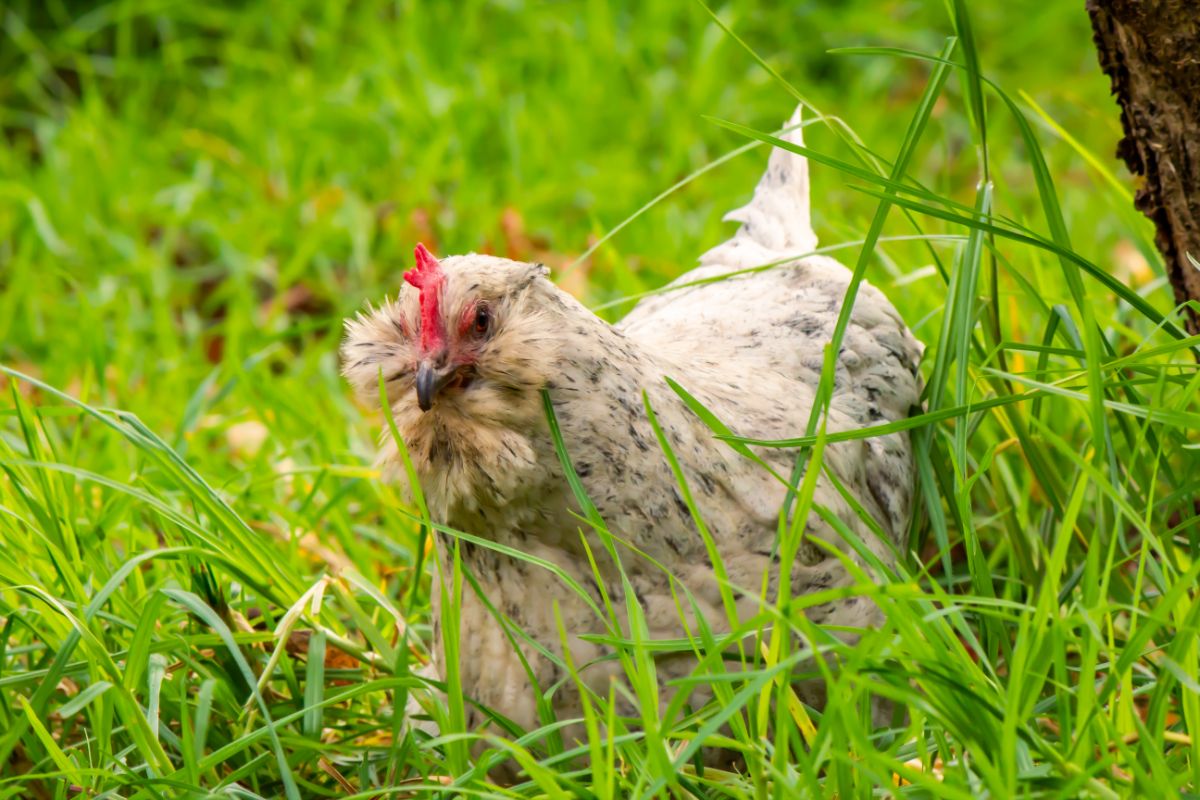
The Ameraucana is a cute and unique-looking breed of chicken. It’s often highly sought after due to being easy to raise, having a friendly temperament, and of course, laying blue eggs!
Whether you’re raising chicks or have some adult birds, it’s important to know if you have hens (females) or roosters (males) in your flock.
Telling the sex of a chicken is difficult when they first hatch. It gets easier the older the chicken gets, as well as becoming easier with experience.
Here is a look at the Ameraucana Rooster vs Hen and the differences to look for when identifying the sex of the bird, as well as some of their characteristics.
Jump to:
- How Do You Tell if an Ameraucana Is a Rooster?
- Ameraucana Hen vs Rooster at 6-8 Weeks’ Old
- Ameraucana Hen vs Rooster at 10-12 Weeks’ Old
- Other Tips for Telling Ameraucana Roosters vs Hens Apart as They Age
- Difference Between Adult Ameraucana Roosters vs Hens
- At What Age Do Ameraucana Roosters Crow?
- In Summary
How Do You Tell if an Ameraucana Is a Rooster?
There are some ways you can tell if an Ameraucana is a rooster - or a hen - but it depends on the age of the bird for the most part.
Some poultry experts use a technique called ‘vent sexing’, which involves squeezing feces out of a baby chick and investigating their anatomy.
This takes a lot of practice and experience though, and it’s still said to only be 90% accurate.
This is why a lot of hatcheries will not give you a guarantee when selling baby chicks, and some just sell chickens as ‘straight-run’, which means they can be any sex.
Here are some more reliable ways of determining if an Ameraucana is a rooster or a hen based on their age:
Ameraucana Hen vs Rooster at 6-8 Weeks’ Old

When raising chicks, it’s around the age of 6-8 weeks of age when you will start to see some physical characteristics that help you tell roosters apart from hens.
It’s often difficult if you have just one or two chicks, but if you have a bunch of chicks you’ll see them developing at different rates.
Roosters’ wattles and combs tend to grow quicker and are noticeably redder than a hen’s.
Ameraucanas have small pea-type combs, and their wattles are almost non-existent, so this is a little more tricky than breeds with large combs.
But it’s still a valid way of telling cockerels and pullets apart if you have one of each sex next to one another.
Related - A look at when Ameraucans start laying eggs.
Ameraucana Hen vs Rooster at 10-12 Weeks’ Old
The next milestone that helps you tell male and female chickens apart, and this one is much more obvious - is when Ameraucanas develop their adult feathers.
At around 10-12 weeks of age, Ameraucanas start to get pronounced hackle feathers, which are the feathers around their necks and down their backs.
They also develop saddle feathers, which are the feathers lower down on the chicken’s back near the base of their tails.
The main difference here is that roosters’ hackle and saddle feathers are long and pointy, while a hen’s feathers are shorter and much more rounded.
To get a better idea, take a look at adult Ameraucanas that are fully matured. You will clearly see that roosters’ feathers are much larger and give them a very different appearance.
Other Tips for Telling Ameraucana Roosters vs Hens Apart as They Age

I’ve heard a few crazy methods and old wives’ tales over the years, but I’m not going to share those with you.
Some of the more reliable ways of telling male and female chickens apart as they age that do work are:
- Looking at their feathers; roosters tend to have shinier feathers than hens
- Roosters are usually friendlier and much bolder, they’re more likely to interact with you
- Roosters have thicker legs and bigger feet, at some point you should notice this
- If you observe a chick walking, roosters tend to have more of a strut about their walk
- Roosters are ultimately going to be bigger than hens
Obviously, these characteristics are not the most obvious or reliable. But in combination with other signs, it can help you determine if a chick is going to grow up to be a rooster or a hen.
Telling male and female chickens apart from an early age is also something that gets easier with experience.
It can feel impossible the first time you try to spot the small differences between chicks, but it’ll get easier over time, I promise.
Difference Between Adult Ameraucana Roosters vs Hens
If you have fully grown Ameraucanas, this is when it’s easiest to tell the difference between a rooster vs a hen.
Simply put; physically, roosters are much larger than hens, and their hackle, tail, and saddle feathers are much larger.
Personality-wise, roosters strut around and are much more aggressive than hens. Oh, and there is the obvious thing to point out - roosters do not lay eggs!
Related - Did you know that hens do not need a rooster to lay eggs?
At What Age Do Ameraucana Roosters Crow?
Probably the most reliable way to tell a rooster from a hen is the fact that roosters crow loudly, while hens cluck and chatter.
There are some instances when hens will crow, but this is very rare.
The age at which Ameraucana roosters first crow will be around 4-5 months old. Every bird is different though, there is no set age when they will let out that first “cock-a-doodle-do”.
But when one of your chickens does start giving you an early morning call by crowing, you know you have a rooster on your hands!
In Summary
Ameraucanas are wonderful chickens, they’re a lot of fun to raise and have a distinctive look and personality compared to most breeds.
It’s hard to tell male and female chicks apart, but once you know what you’re looking for it becomes easy to tell roosters apart from hens as they age.





